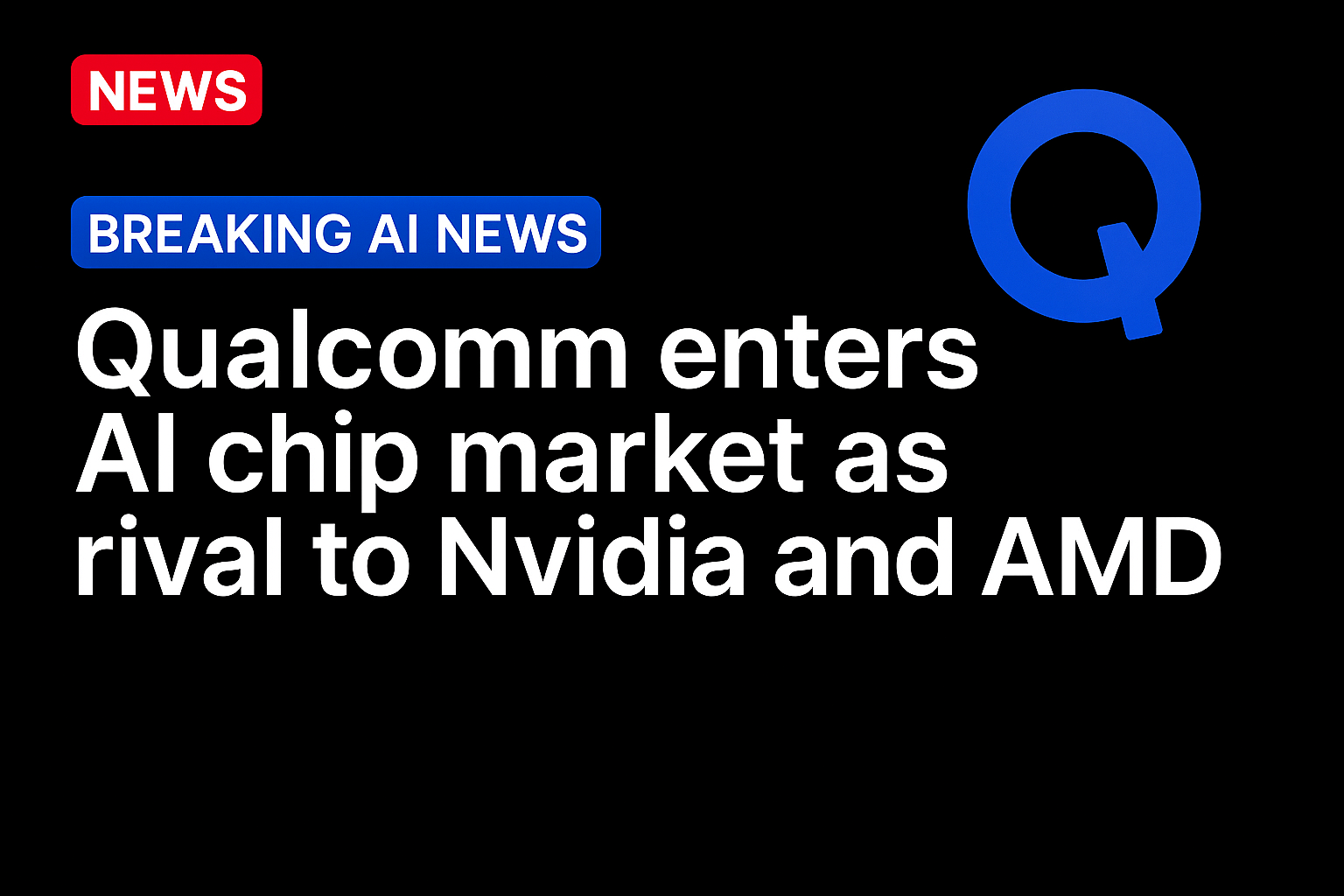
Qualcomm announced Monday (Oct. 27) a new line of processors designed to power artificial intelligence inside data centers, signaling a major expansion beyond its traditional mobile-chip business. The company said its AI200 and AI250 chips will help enterprises run large-scale AI applications such as chatbots, analytics engines and digital assistants more efficiently while reducing energy use.
Qualcomm Introduces AI200 and AI250
The San Diego-based company said the AI200 will be available in 2026 and the AI250 in early 2027. The processors are built for the “inference” phase of AI, where trained models are put to work on real-world tasks rather than being developed. Qualcomm said the chips can be installed individually or in full data-center racks and will support popular AI software frameworks to simplify deployment for businesses.
Inference already represents a growing share of total computing demand and is expected to overtake training by 2026 as companies embed AI into customer support, financial forecasting and logistics workflows. Qualcomm said its new chips are optimized for performance per watt, a measure of how efficiently they process AI tasks. Internal testing cited by CNBC showed that an AI200 rack can deliver equivalent output using up to 35% less power than comparable GPU-based systems savings that could lower annual energy costs by millions of dollars for large data-center operators.
Competition Heats Up
Competitors are also expanding their offerings. AMD’s MI325X accelerator, launched in September, is built for high-memory AI workloads, while Intel’s Gaudi 3 emphasizes open-source integration. Qualcomm’s approach differs by offering rack-scale inference systems, allowing enterprises to install complete configurations rather than assembling components.
The company also announced a partnership with Saudi-based startup Humain, which plans to deploy about 200 megawatts of Qualcomm-powered AI systems starting in 2026, according to Investors.com. Qualcomm said the collaboration demonstrates the chips’ readiness for enterprise-scale workloads across sectors including finance, manufacturing and healthcare.
Shift From Smartphones to Infrastructure
Qualcomm’s move into AI infrastructure reflects its strategy to diversify beyond smartphones — a market that has matured in recent years. The company completed a $2.4 billion acquisition of U.K.-based Alphawave IP Group in June to expand its connectivity and systems integration capabilities for large computing installations, Reuters reported.
The launch positions Qualcomm in direct competition with Nvidia and Advanced Micro Devices (AMD), which dominate AI data-center hardware. As The Wall Street Journal noted, Qualcomm’s entry signals that chipmakers are racing to capture enterprise demand as more companies build their own AI infrastructure rather than relying entirely on cloud providers.
Qualcomm President Cristiano Amon told CNBC that the company aims to make AI “cost-efficient at scale,” drawing on its experience building power-efficient mobile chips to improve energy performance in large computing environments. “The next stage of AI will be about running it everywhere efficiently,” Amon said.
Making AI More Efficient and Scalable for Business
Running AI systems at scale is costly. Every time a generative model answers a question, analyzes data or processes a transaction, it consumes computing power and electricity. Qualcomm said its new chips are engineered to deliver high performance with lower power use, potentially helping businesses manage AI expenses more predictably.
While Nvidia continues to dominate AI training, Qualcomm’s strategy targets inference, the layer where models perform the work. Nvidia continues to dominate training chips, but its near monopoly on inference is already eroding as firms like AMD, Intel and now Qualcomm introduce alternatives built around energy efficiency and modular deployment.
AI Infrastructure Market
For enterprises, the arrival of new chip suppliers could translate into more options for sourcing infrastructure and lower barriers to scaling AI tools. The data-center market is also expanding rapidly. Qualcomm’s focus on power efficiency and cost predictability aims to attract enterprise buyers who measure success by operational stability and long-term total cost of ownership, rather than peak computing speed.
If these new entrants succeed, enterprises could benefit from greater supply resilience and more competitive pricing in the years ahead. A more diverse chip supply chain may ease the GPU shortages that have constrained enterprise AI expansion, while competition among hardware vendors could lower infrastructure costs across the industry. As PYMNTS has reported, the global spending on AI infrastructure could exceed $2.8 trillion through 2029.
Source: https://www.pymnts.com/




